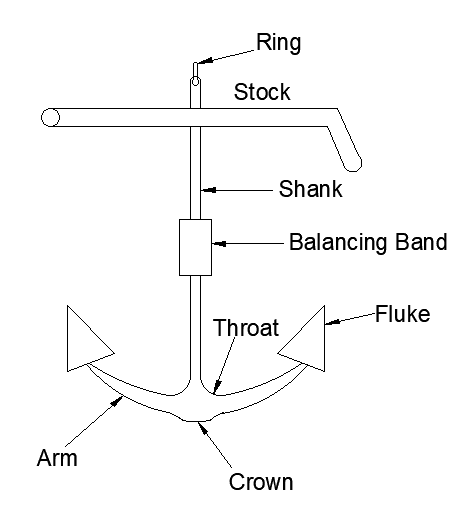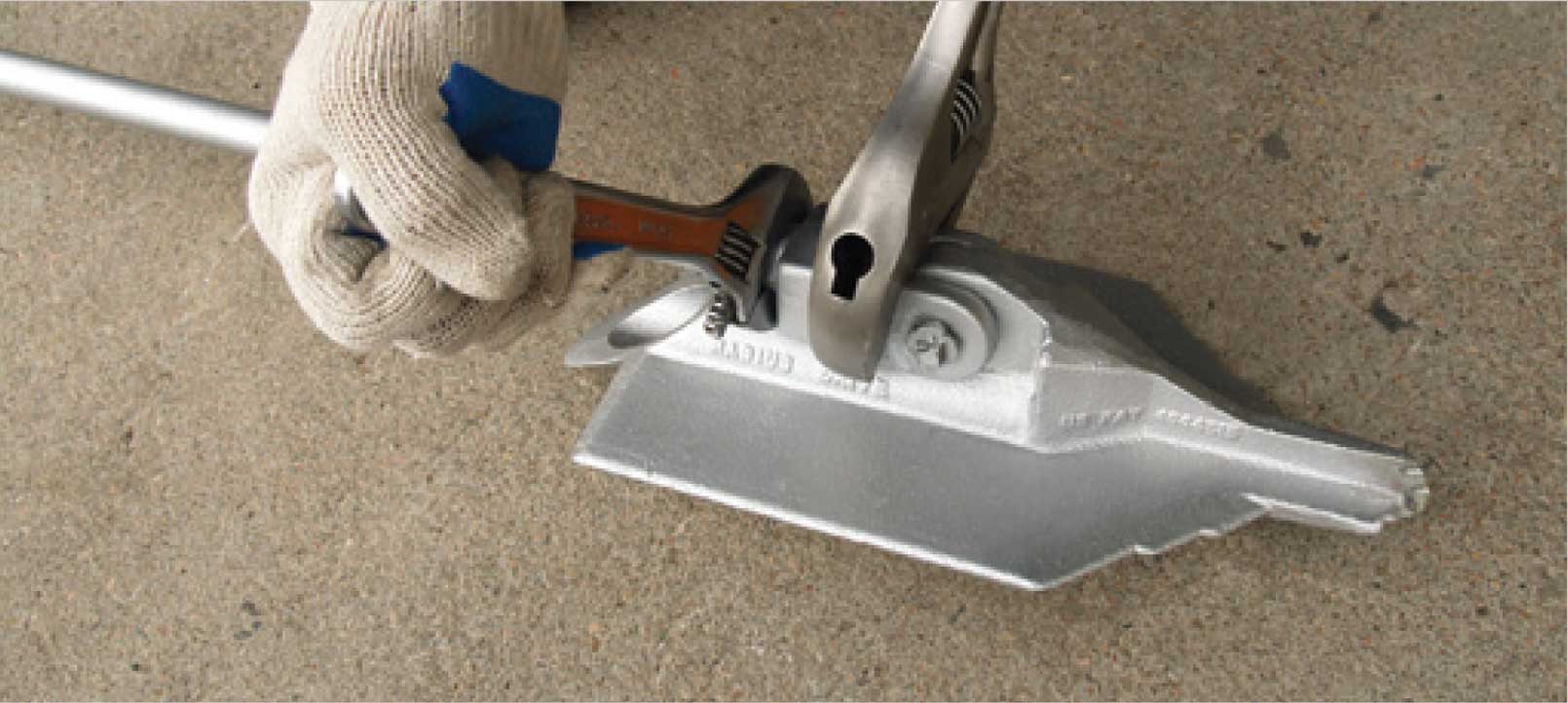Installing Earth Anchor: Best Practices and Tips for Success
Wiki Article
Efficient Anchor Systems Designed for Optimum Toughness
The design of reliable support systems is vital in ensuring optimal stamina and reliability throughout numerous applications, specifically in marine and civil design. As we discover the different types of support systems and the materials that underpin their efficiency, it becomes evident that the future of securing technology might hold also higher developments.Importance of Anchor Solutions
Anchor systems play a critical function in numerous applications, from aquatic construction to overseas boring and also in the security of structures on land. Their main feature is to supply protected holding power, ensuring that structures continue to be secure and safe under different environmental problems. In marine atmospheres, anchors are important for mooring vessels, preventing drift as a result of wind, currents, or waves. Without dependable anchoring, ships might be at threat of accident or grounding, leading to considerable economic and environmental repercussions.Along with marine applications, support systems are vital in civil engineering, especially in the building and construction of maintaining wall surfaces, bridges, and structures in geologically tough locations. These systems assist disperse lots effectively, counteracting pressures such as soil pressure and seismic activity. The relevance of anchor systems reaches the renewable power sector, where they protect wind turbines and offshore platforms, adding to the security and efficiency of energy generation.
Eventually, the efficiency of a support system is essential to the security, longevity, and performance of numerous structures, making their design and application an important part in engineering and construction methods across numerous markets.
Ingenious Materials in Support Style

Modern developments in materials scientific research have actually significantly transformed support design, improving efficiency and sturdiness. The consolidation of high-strength alloys and composite materials has actually caused supports that can endure severe environmental conditions while keeping architectural integrity. These ingenious products not only use exceptional tensile toughness however also reduce weight, boosting ease of installment and handling.
One noteworthy growth is making use of carbon fiber reinforced polymers (CFRP), which supply outstanding rust resistance and high strength-to-weight ratios. This enables the layout of anchors that are both light-weight and extremely resilient, making them ideal for aquatic applications where direct exposure to deep sea can lead to product degradation.
Furthermore, advancements in coverings-- such as sophisticated epoxy and galvanization-- further protect steel supports from corrosion, expanding their solution life. These finishes can be customized to fulfill specific environmental challenges, ensuring that anchors perform dependably even in harsh conditions.
Moreover, the assimilation of clever materials, which can adjust to altering tons and environmental variables, is paving the means for future support layouts. These advancements underscore a pattern in the direction of better performance and dependability in securing services, eventually improving safety across various applications.
Sorts Of Efficient Support Equipments
Effective securing options are necessary for making sure stability and security in different applications, from building and construction to marine operations. A number of kinds of effective support systems stand out for their efficiency and adaptability to different environments.One popular kind is the screw anchor, which utilizes a helical design to offer superior holding power in soil and soft ground. These anchors are specifically beneficial have a peek at these guys in momentary structures and can be quickly gotten rid of and reused.
One more utilized system is the driven stack support, often used in heavy and aquatic building tasks. These supports are driven deep right into the ground, providing superb resistance to lateral pressures, making them suitable for sustaining large frameworks.
For marine applications, the mooring buoy support system is vital. This system consists of resilient gadgets attached to anchors on the seabed, allowing vessels to continue to be stable while decreasing drag from currents and winds.
Finally, the deadweight anchor system depends on heavy weights to supply security and is generally used in overseas installations. Each kind of support system is created to fulfill particular demands, guaranteeing the safety and security and honesty of structures and vessels in different problems.
Safety Specifications and Rules
Making sure the safety and integrity of securing systems involves adherence to strict safety standards and laws. These criteria are developed by various companies, consisting of the American Society for Testing and Materials (ASTM), the International Organization for Standardization (ISO), and neighborhood structure codes. Compliance with these guidelines is essential to assure that securing systems can hold up against environmental anxieties and tons, lowering the danger of failure.Examining and qualification procedures are basic elements of safety requirements. Anchoring systems should undergo rigorous assessments, including tensile stamina tests, fatigue examinations, and environmental effect examinations. These tests help establish the systems' efficiency under real-world problems, guaranteeing they satisfy or surpass the needed security limits.
Furthermore, manufacturers More Bonuses are called for to supply detailed specs and guidelines for installation and maintenance, which are important to upholding safety criteria. Routine evaluation and maintenance methods have to likewise be established to recognize potential weaknesses in time.
Future Fads in Anchor Technology
The future of anchor technology is poised for substantial developments, driven by the raising need for boosted safety and security and performance in building and construction and engineering applications. Innovations are expected in products, layout, and setup strategies, which will certainly boost the strength and resilience of support systems.One arising fad is the assimilation of clever modern technology into anchor systems. Earth Anchor. By incorporating sensing units, these systems can keep track of tension, lots, and environmental conditions in real-time, enabling positive upkeep and increased dependability. In addition, developments in composite materials may bring about lighter, yet stronger anchors that can stand up to extreme problems, minimizing the total weight of frameworks


Moreover, modular anchor systems are acquiring grip, permitting less complicated installment and versatility to various job needs. Earth Anchor. As the sector welcomes automation, robotic installation techniques could additionally simplify the anchoring procedure, improving efficiency and accuracy
Conclusion
In conclusion, reliable support systems play an essential duty in guaranteeing the security and safety internet and security of marine and civil engineering tasks. Adherence to security criteria and policies additionally highlights the significance of reliability in support systems.The design of effective support systems is vital in making certain maximum toughness and reliability across different applications, especially in aquatic and civil engineering. As we check out the various kinds of support systems and the materials that underpin their effectiveness, it becomes obvious that the future of securing technology might hold also greater developments.Making sure the safety and security and integrity of anchoring systems involves adherence to rigorous safety and security criteria and regulations.In conclusion, efficient support systems play a vital role in ensuring the stability and safety of marine and civil engineering jobs. Adherence to safety and security criteria and guidelines additionally emphasizes the significance of integrity in anchor systems.
Report this wiki page